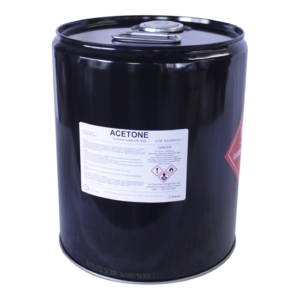Description
Ethylene Glycol 99%
From Wikipedia, the free encyclopedia
Ethylene glycol (monoethylene glycol (MEG), IUPAC name: ethane-1,2-diol) is an alcohol with two -OH groups (a diol), a chemical compound widely used as an automotive antifreeze. In its pure form, it is an odorless, colorless, syrupy liquid with a sweet taste. Ethylene glycol is toxic, and its accidental ingestion should be considered a medical emergency.
Production
Ethylene glycol is produced from ethylene, via the intermediate ethylene oxide. Ethylene oxide reacts with water to produce ethylene glycol according to the chemical equation
C2H4O + H2O ? HOCH2CH2OH
This reaction can be catalyzed by either acids or bases, or can occur at neutral pH under elevated temperatures. The highest yields of ethylene glycol occur at acidic or neutral pH with a large excess of water. Under these conditions, ethylene glycol yields of 90% can be achieved. The major byproducts are the ethylene glycol oligomers diethylene glycol, triethylene glycol, and tetraethylene glycol.
Uses
The major use of ethylene glycol is as a coolant or antifreeze in, for example, automobiles and personal computers. Due to its low freezing point, it is also used as a deicing fluid for windshields and aircraft. Ethylene glycol has become increasingly important in the plastics industry for the manufacture of polyester fibers and resins, including polyethylene terephthalate, which is used to make plastic bottles for soft drinks. The antifreeze capabilities of ethylene glycol have made it an important component of vitrification mixtures for low-temperature preservation of biological tissues and organs.
Minor uses of ethylene glycol include the manufacture of capacitors, as a chemical intermediate in the manufacture of 1,4-dioxane and as an additive to prevent the growth of algae in liquid cooling systems for personal computers.
Ethylene glycol’s high boiling point and affinity for water makes it an ideal desiccant for natural gas production. In the field, excess water vapor is usually removed by glycol dehydration. Glycol flows down from the top of a tower and meets a rising mixture of water vapor and hydrocarbon gases from the bottom. The glycol chemically removes the water vapor, allowing dry gas to exit from the top of the tower. The glycol and water are separated, and the glycol cycles back through the tower.
Ethylene glycol is commonly used in laboratories to precipitate out proteins in solution. This is often an intermediary step in fractionation, purification and/or crystallization. It can be used to protect functional groups from reacting during organic synthesis. To get the functional group back to its original composition, simply add water and acid.
Ethylene glycol has seen some use as a rot and fungal treatment for wood, both as a preventative and a treatment after the fact. It has been used in a few cases to treat partially rotted wooden objects to be displayed in museums. It is one of only a few treatments that are successful in dealing with rot in wooden boats, and is relatively cheap.
Ethylene glycol is commonly used as a preservative for specimens in schools, frequently during dissection. It is said to be safer than formaldehyde, but the safety is questionable.






